In February 2022, an intensive short-term workshop was conducted as part of the Cultural Future Camp: Co-creating New Cultural Experiences through Inclusive Design program. This program was jointly organized by the Creative Well Project (renamed Creative Well-being Tokyo in FY 2022), which is run by the Tokyo Metropolitan Foundation for History and Culture, and the Tsukuba University of Technology, Japan’s only institution for the higher education of hearing or visually impaired persons.
![]()
![]()
事務局からのお知らせ
”Cultural Future Camp: Co-creating New Cultural Experiences through Inclusive Design” Report on the Intensive Four-day Workshop [Part 2]
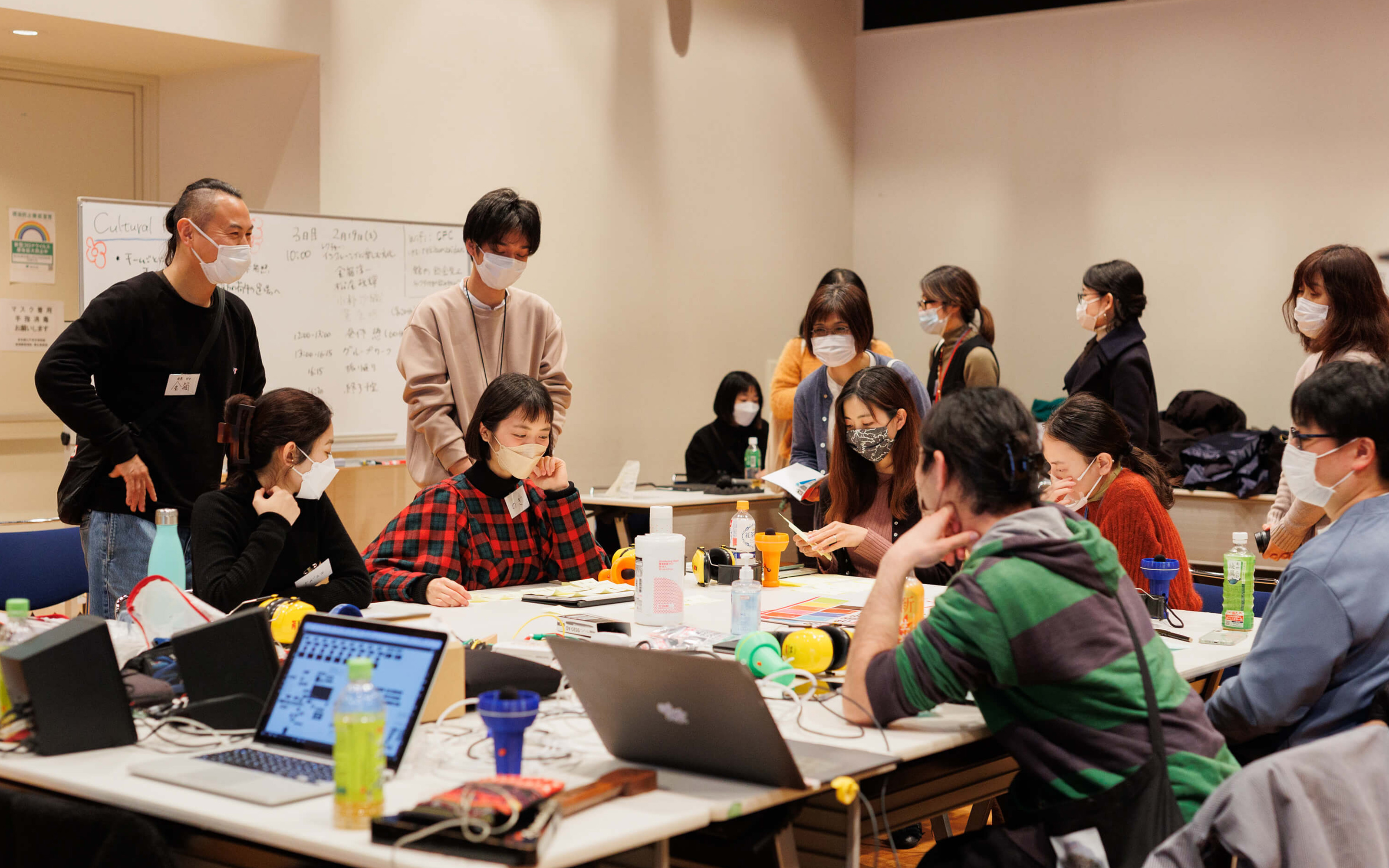
In the group work section of the workshop, participants co-created new ways of enjoying the arts and culture. Following the Subtitles and Games teams in Part 1, Part 2 will report on the two remaining teams: Techtile (Technology based tactile design) and Music (instrument interfaces).
The Techtile (Technology based tactile design) team spun stories through tactile sensations
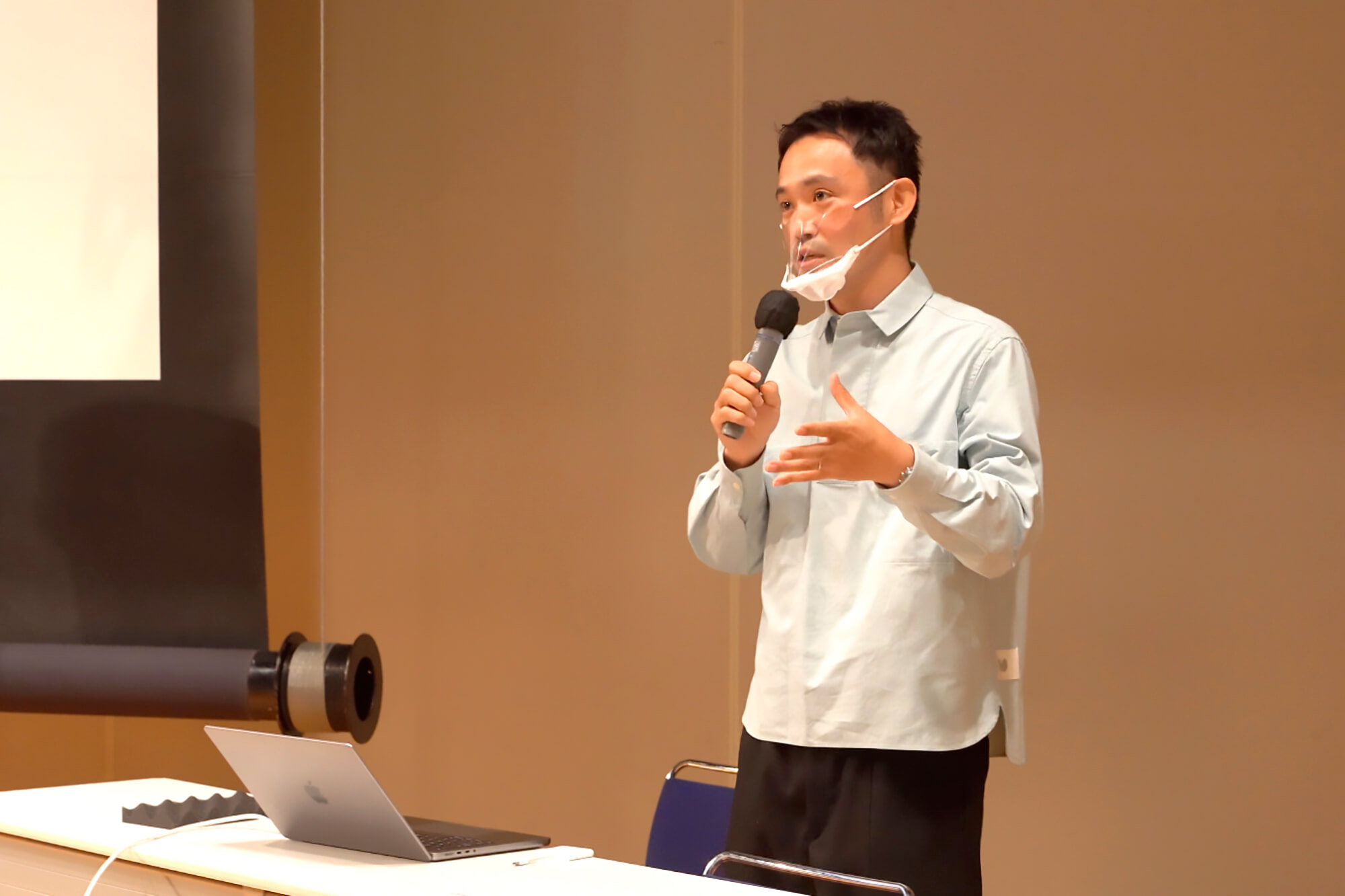
Yasuaki Kakehi, who is the associate professor of the Interfaculty Initiative in Information Studies at the University of Tokyo, an interactive media researcher, and an artist, served as the lecturer for the Techtile (technology bese tactile design) team. Kakehi has been researching TECHTILE, modes of tactile expression mediated by technology, since the field’s early days, and is developing a “TECHTILE toolkit” that transmits tactile experiences in real time.
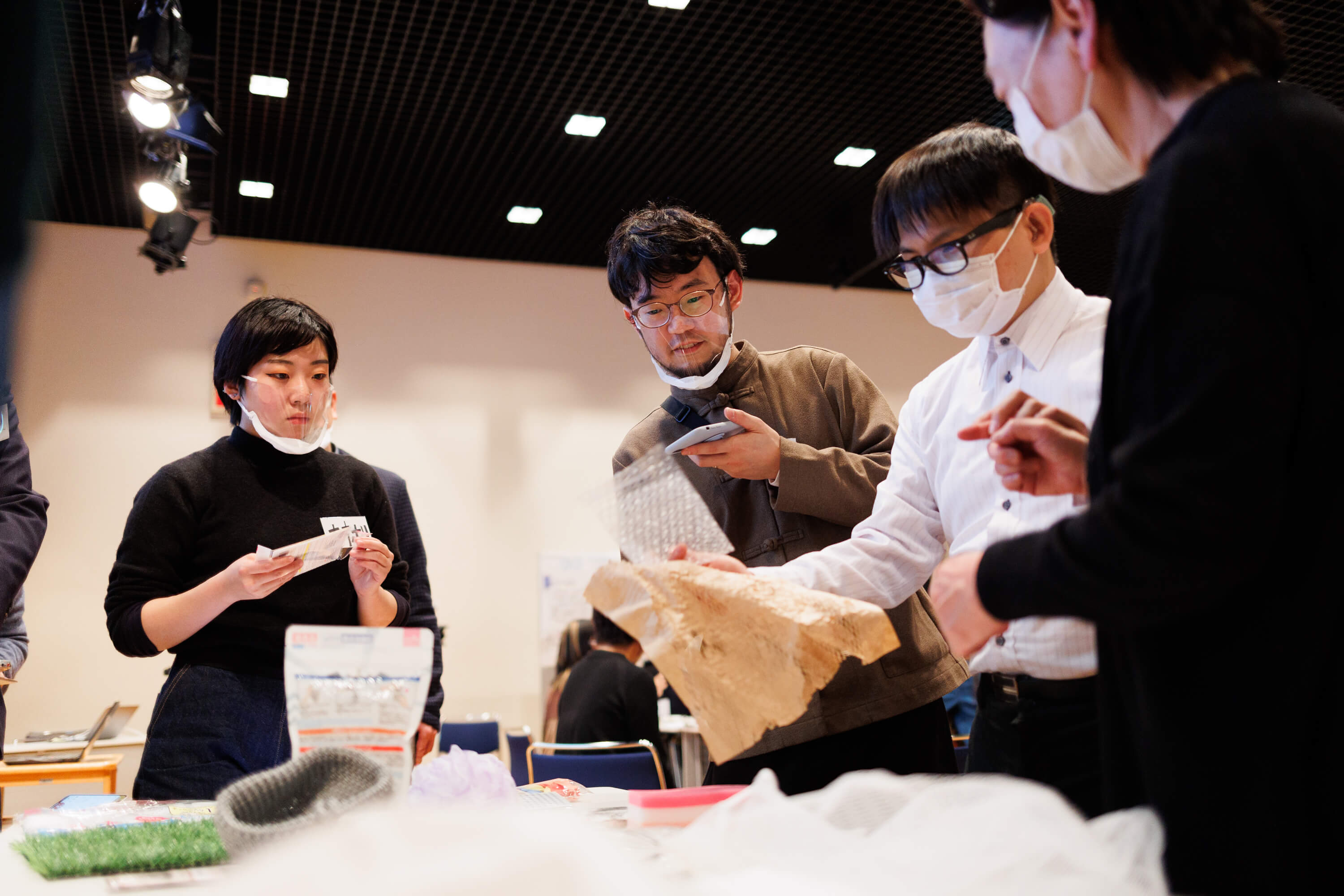
Group work was facilitated by Wataru Date, a graphic designer and member of the Yasuaki Kakehi Laboratory. First, team members experienced what it means to perceive the world through their sense of touch using the TECHTILE toolkits. They tried a tactile tool that uses a mic to pick up sound vibrations and transmits the vibrations to another user. They also took a walk outside with “Oyumaru“, a molding material that softens in hot water, and made molds of wall textures, keyholes, and other objects they found interesting to touch in order to share them with each other.
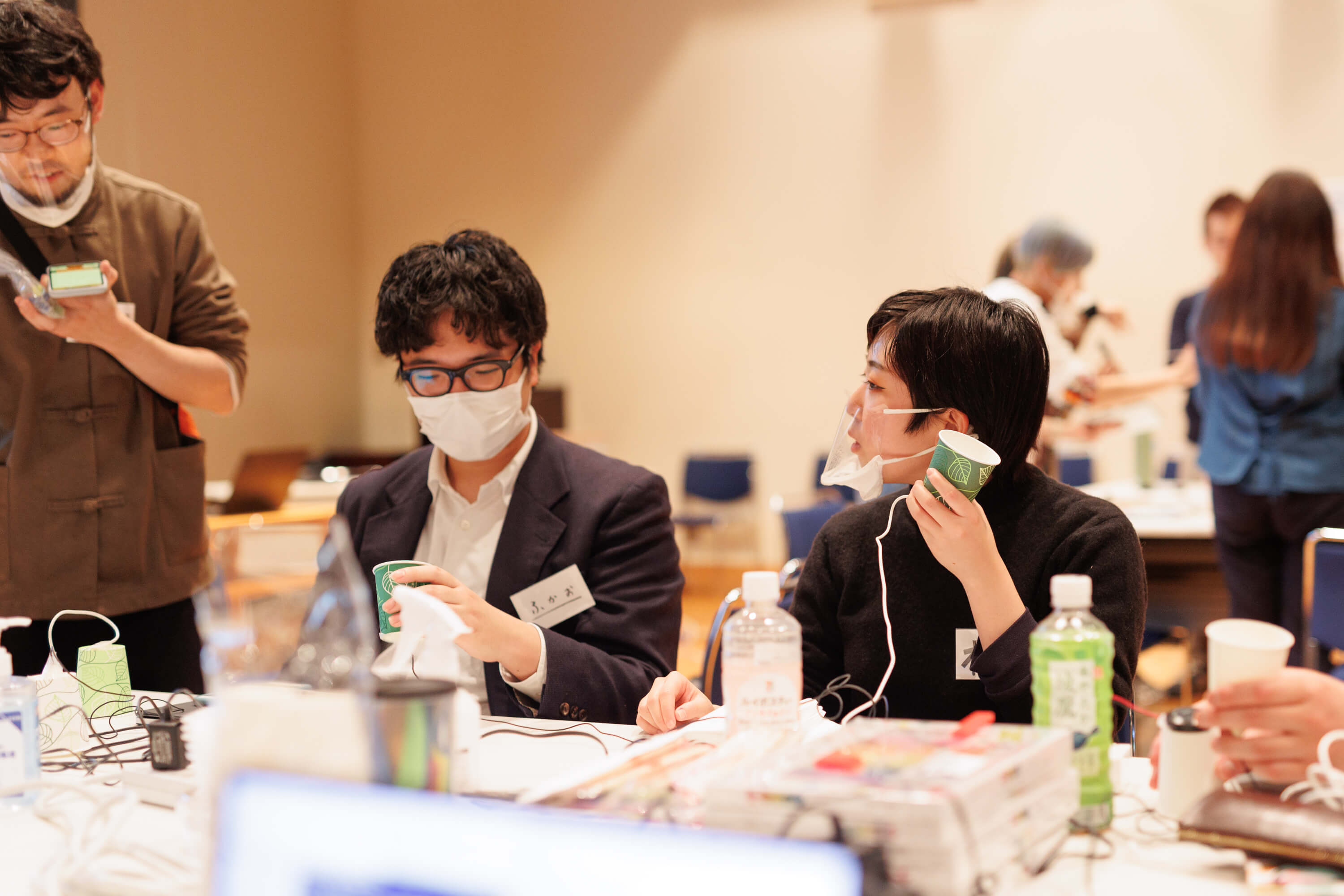

Next, the team tackled the topic of creating and communicating tactile sensations. They came up with ideas for giving concrete form to images and tactile sensations that do not exist as objects in order to invite people to experience them. They thought about how to convey the sensations accurately and considered “narratives” to trigger the imagination at the same time.
The team’s final presentation was titled “Stories Spun by Tactile Sensations / Tactile Sensations with Narrative Value.” Each member introduced their own story, which they expressed through the use of materials with unique tactile qualities.
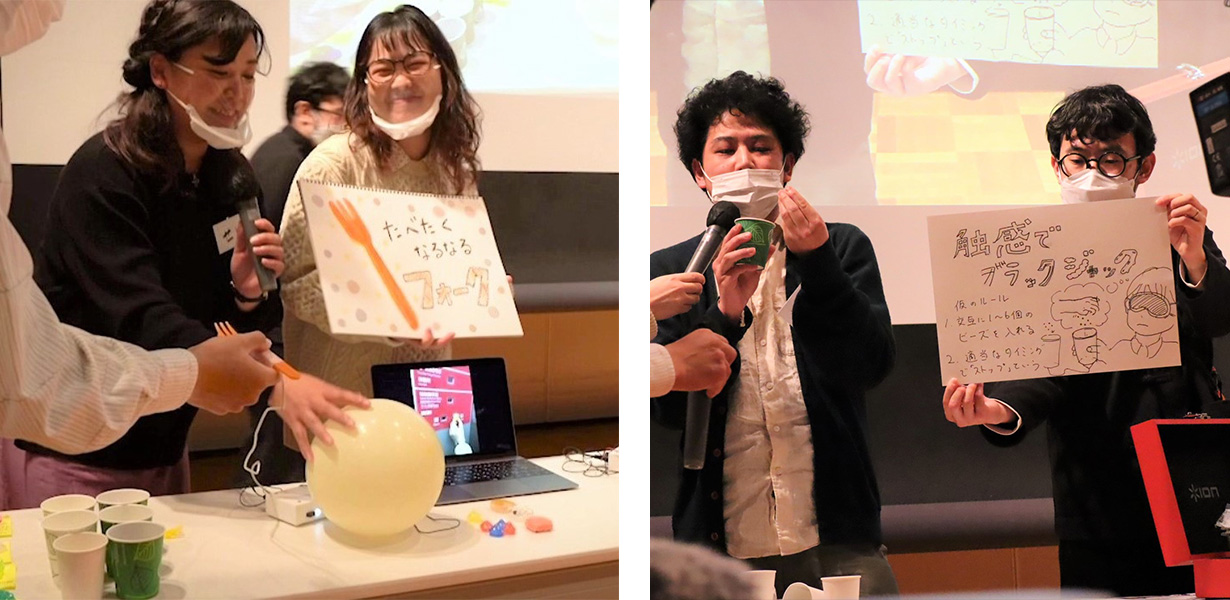
Each member presented their own fun invention. The “fork that makes people want to eat” was designed to transmit a tactile sensation that makes bringing the fork to the mouth fun, which can be used by parents who are having trouble getting their child to eat a bell pepper, for example. Another member’s idea was to divide the elevator’s open and close buttons into buttons with “springy” and “spiky” textures. There were also paper cups that could be used to play Blackjack and a version of the “telephone” game that used beads, as well as a tool to communicate love through vibrations using a sponge, petri dish, and microphone.

Team member Akiko Ohori, who performs outdoor theater while studying design at an art university, came up with a device that simultaneously transmits dialogue and tactile sensations to the audience while they watch a theater performance. Her idea was to create productions that convey emotions and atmosphere in tactile form, such as the feeling of fear through cold touch. She got this idea after seeing Atsushi Mori, who is deaf-blind, use Braille and perform tactile sign language with both hands.
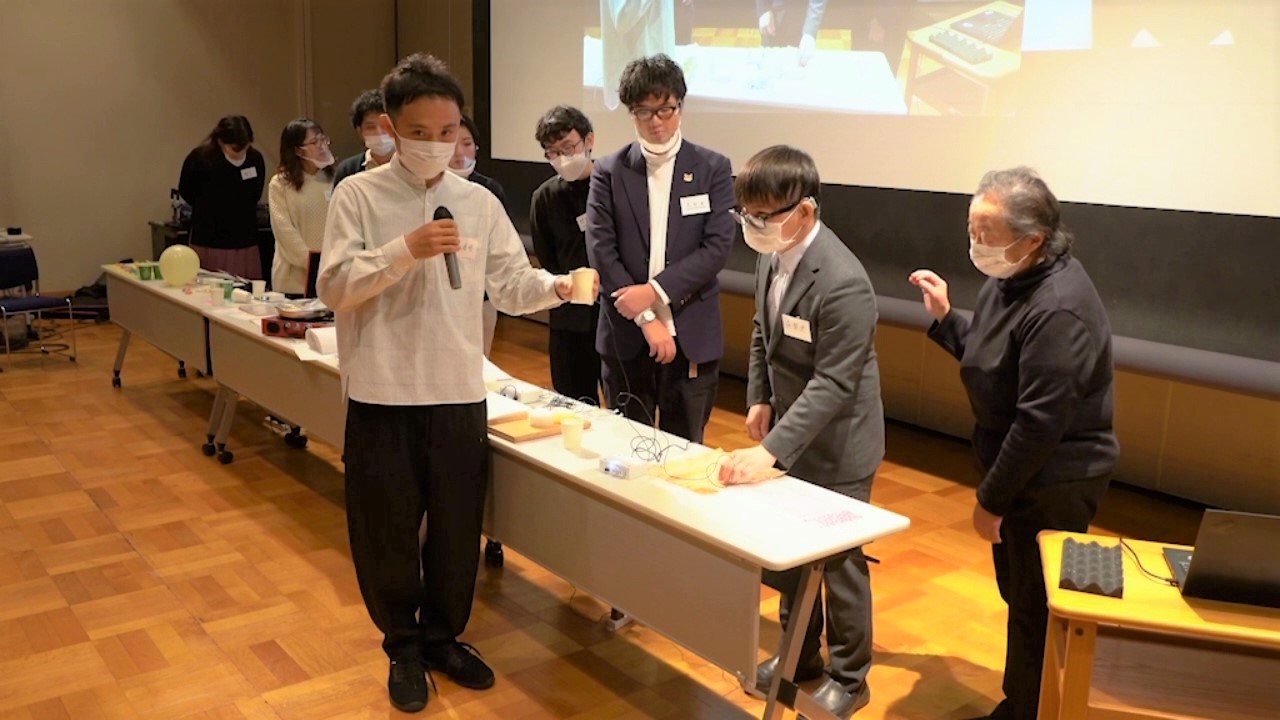
Meanwhile, Mori created a musical device that transmits vibrations using cups. Rubbing the device transmits four modulated “storms” to the palm of the experiencer’s hand.
After trying out the tools and devices developed by each member, lecturer Yasuaki Kakehi described how each felt and what each experience was like for the sake of the other participants in the venue and the online audience. Kakehi concluded with the statement: “The way something is conveyed is also a message in itself. I hope that we can spread dialogue and empathy by feeling the things that others have created.”
The Music (instrument interfaces) team expressed feelings that transcend words
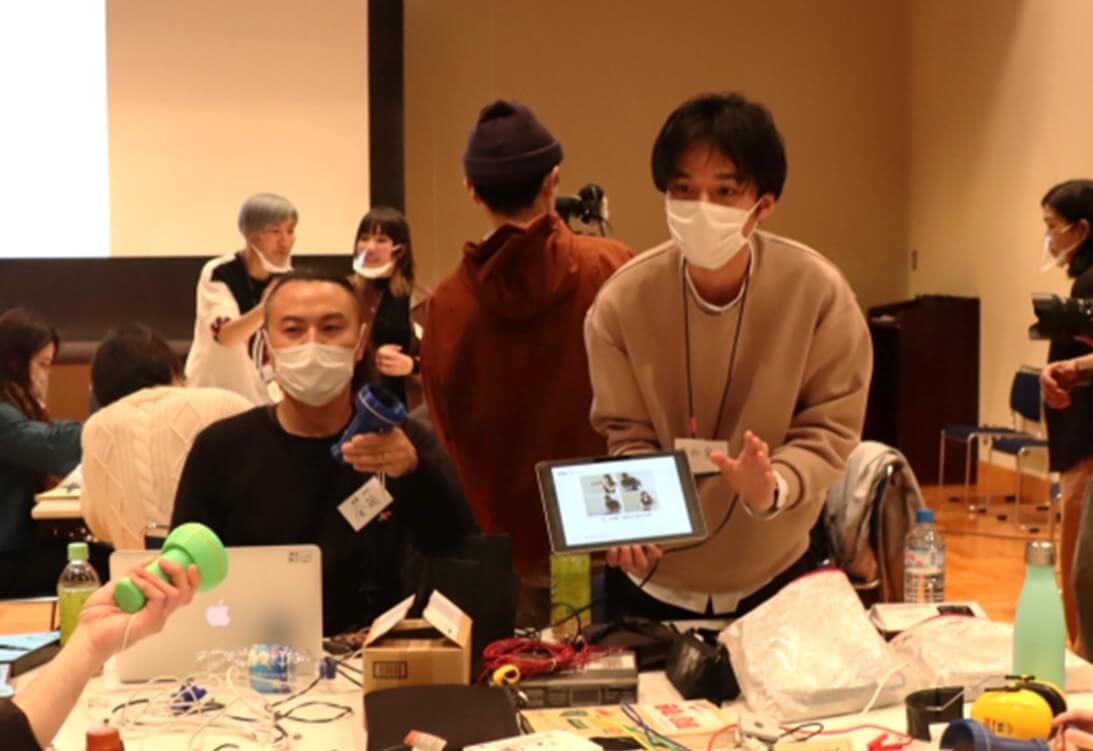
The lecturer for the music (instrument interfaces) team was Jun’ichi Kanebako, who is a researcher specializing in instrument interfaces. Kanebako develops “kyo-yu music instruments,” a term he created to describe instruments that enable people to enjoy music together while regarding disabilities as bodily and sensory characteristics. “By combining sensors with audio sources, we can create sound any way we want,” he says.
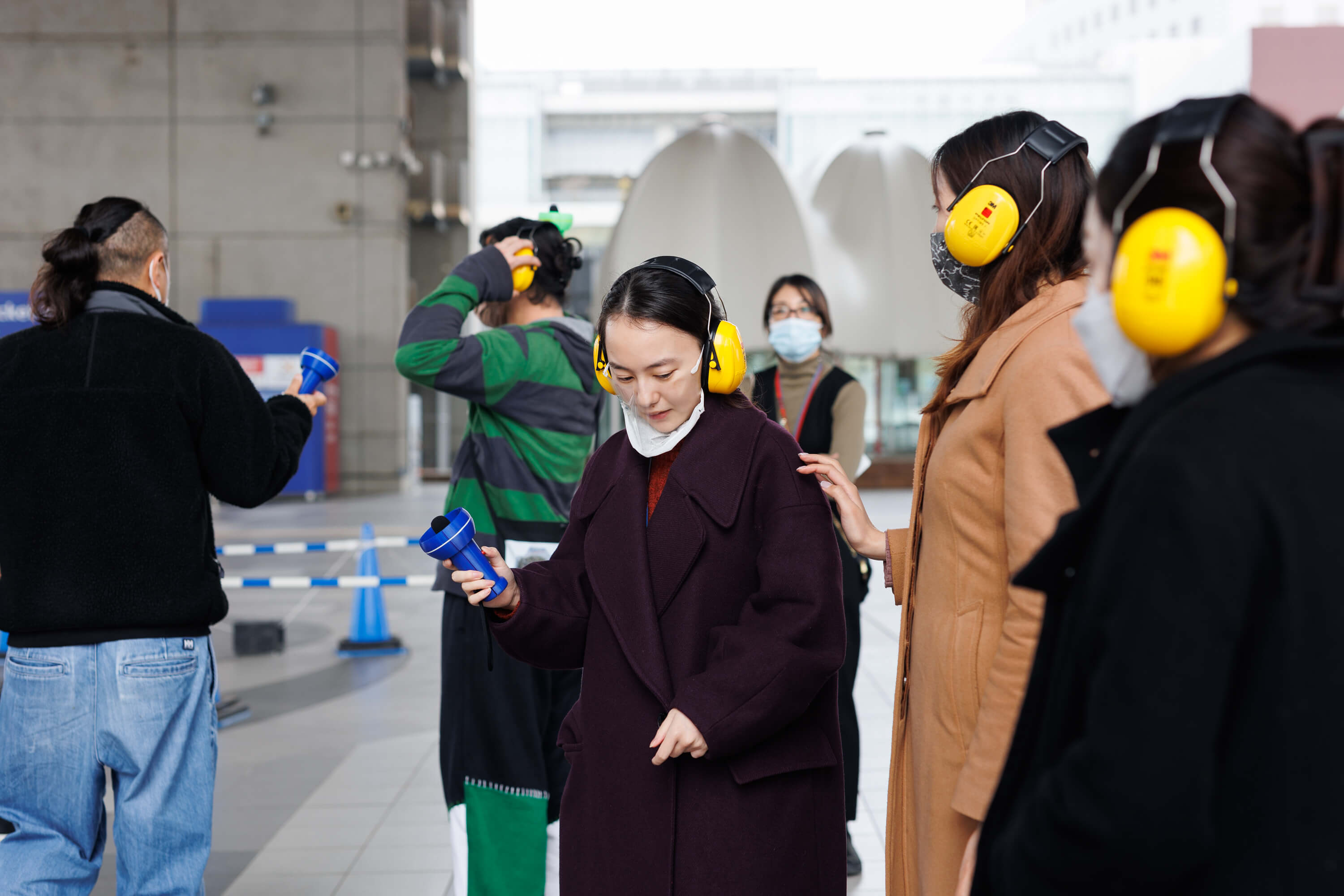
First, team members went outside the venue to experience “Touch the Sound Picnic”, a device created by Kanebako that converts sounds into vibrations. They were able to feel sounds such as the sounds of the train and wind through vibrations. By wearing earmuffs that block out sound, the members came to the realization that they had been sensing sounds with their entire bodies all along, using their eyes, nose, and skin.
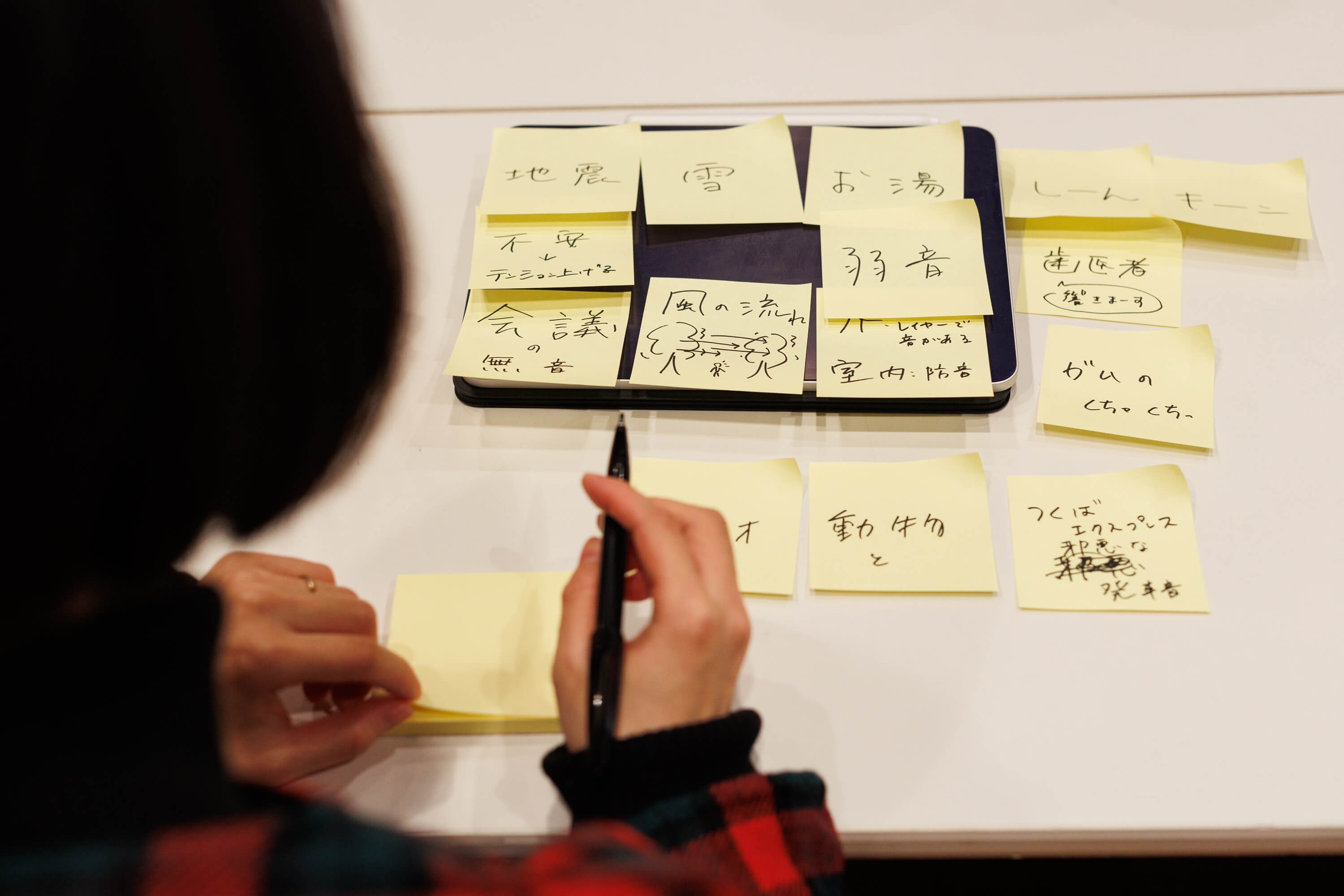
After returning to the venue, the members discussed how they each perceive sounds and what kinds of sounds they feel in their day-to-day lives. They jotted down descriptions of everyday sounds such as the sounds of clocks and vacuum cleaners on sticky notes and pasted them on the wall. During the discussion, one of the members said, “I perceived the act of whining in my mind as sounds.” This led the team to discuss how strange it was that they held images in their minds for ideas without sounds or shapes.
The topic of “the sound of whining” then inspired the team to consider how they perceive things that cannot be touched or heard, and how they could communicate that to others.

Members went around asking participants in other teams about whining. They found out that each person held a different image of whining, as well as a different method of communicating that image to others. Katsuhiro Nishioka said, “I have an image of the sound of water flushing in the latest toilets.” When he dug deeper into this image while sharing videos, it turned out to be the sound of water flushing in the Shinkansen toilets. Atsushi Mori described the feeling as the tactile sensation of crinkling aluminum foil. Another person answered that “whining” sounds like when you feel “annoyed.”
Based on the answers that emerged, the team members explored how to give shape to these images in the form of sounds and how to convey them to others, then created the sounds with Kanebako.

For their final presentation, the team demonstrated the device they created during group work, which lets one person feel another’s whining as vibrations. They also reenacted their exchange about “whining” in a skit: “I tried creating your whining, is this what it’s like?” “No, it’s a bit more like this.” Through this activity, participants experienced the inner feelings of another person and shared them with many others.
Based on the members’ presentation, Kanebako commented, “I think that in the future, there will be the need for a profession whose role is to fine-tune the senses, like a perfumer or a piano tuner.” Nakanishi also seemed to be inspired, saying, “It gave me a lot of ideas that I can apply back to my job in designing sounds.”

One of the team members, Ena Asano, who has low vision, reflected on the workshop in comparison to her usual job, where she proposes to companies designs that incorporate the perspective of people with disabilities while also being easy to use for general consumers. She commented, “it was great that we were able to work with our individual differences without getting too caught up in information accessibility.” Experiencing speculative design at the beginning of the workshop helped her to make a great discovery: “I learned that it’s okay to take a sci-fi approach to thinking, without being trapped by common sense.”
The importance of making many small efforts
The intensive short-term workshop may have begun by forcing participants to cast aside their former assumptions in order to accept the different worlds inhabited by other people. However, it eventually became an opportunity to interact with people with hearing and/or visual disabilities to see what differences there were in their culture and customs, to tune in to each other’s frequencies, and to practice coming up with ideas that had never occurred to them before.
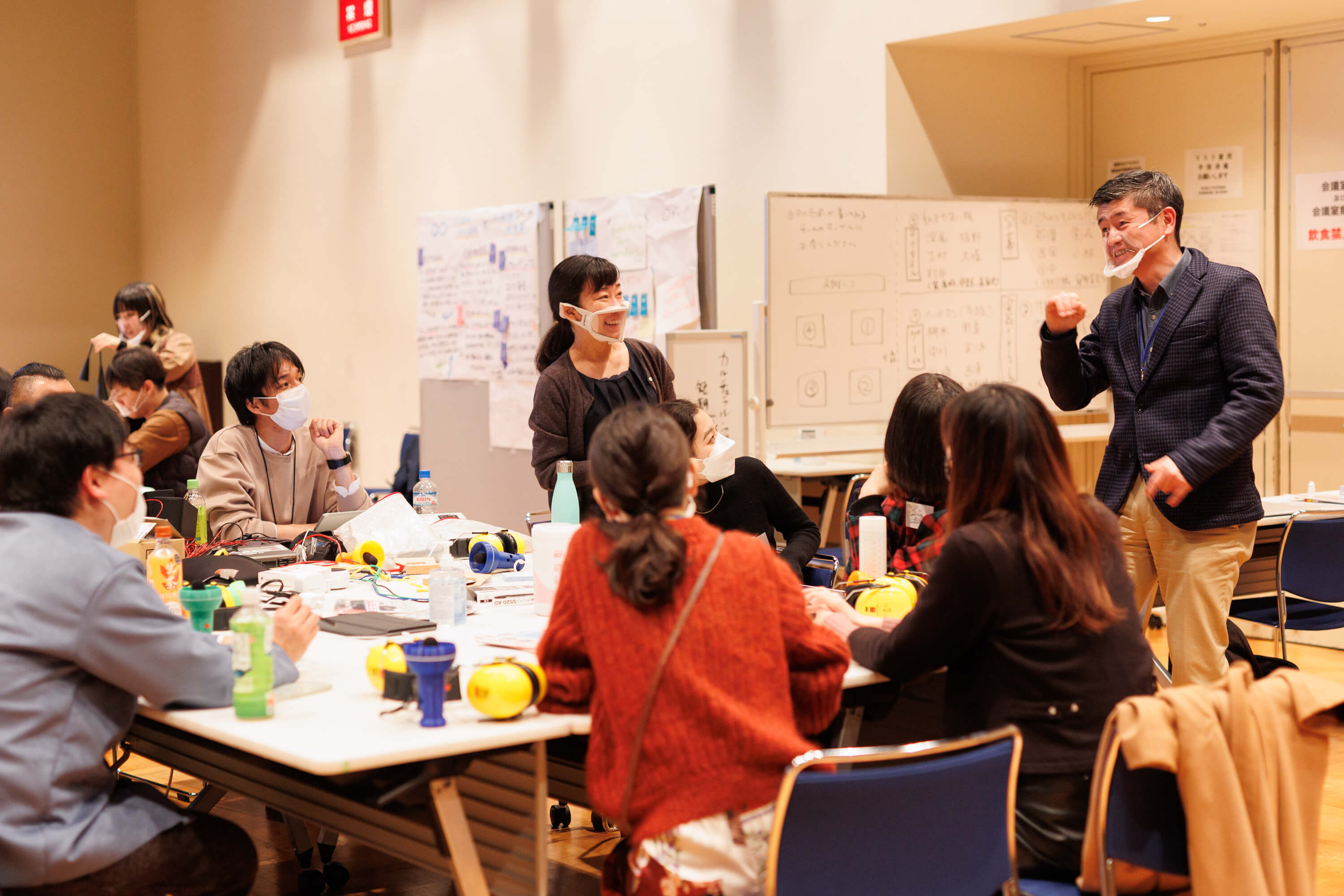
In his commentary, Yasuaki Kakehi pointed out that “conversion” was a recurring keyword in the workshop. Participants expanded each other’s senses, and things happened that created new channels in their bodies. They also challenged themselves to replace things they could not see with forms of expression.
In his general comments, Professor Osugi at Tsukuba University of Technology, who was one of the program’s co-organizers, left participants with these important words: “Cultural facilities are created by people. They envision things, act on it, and move forward. I hope that the accumulation of such activities over time will create something akin to a ship—a ship made from wood, not steel. Each piece is light, but when assembled together, forms a sturdy ship. This is a good way to think about inclusive design.”
Atsushi Mori added, “I have spent most of my time focused on tactile sensations and touch, but this workshop made me want to consider other modalities, such as smell and taste. I think it would be great to be able to incorporate smells into photos taken with a camera, or to have the experience of smelling the ocean from images even if you can’t go to the ocean. This time, I experienced ways to enjoy sound through vibrations, which showed me that there are many possibilities in design.”
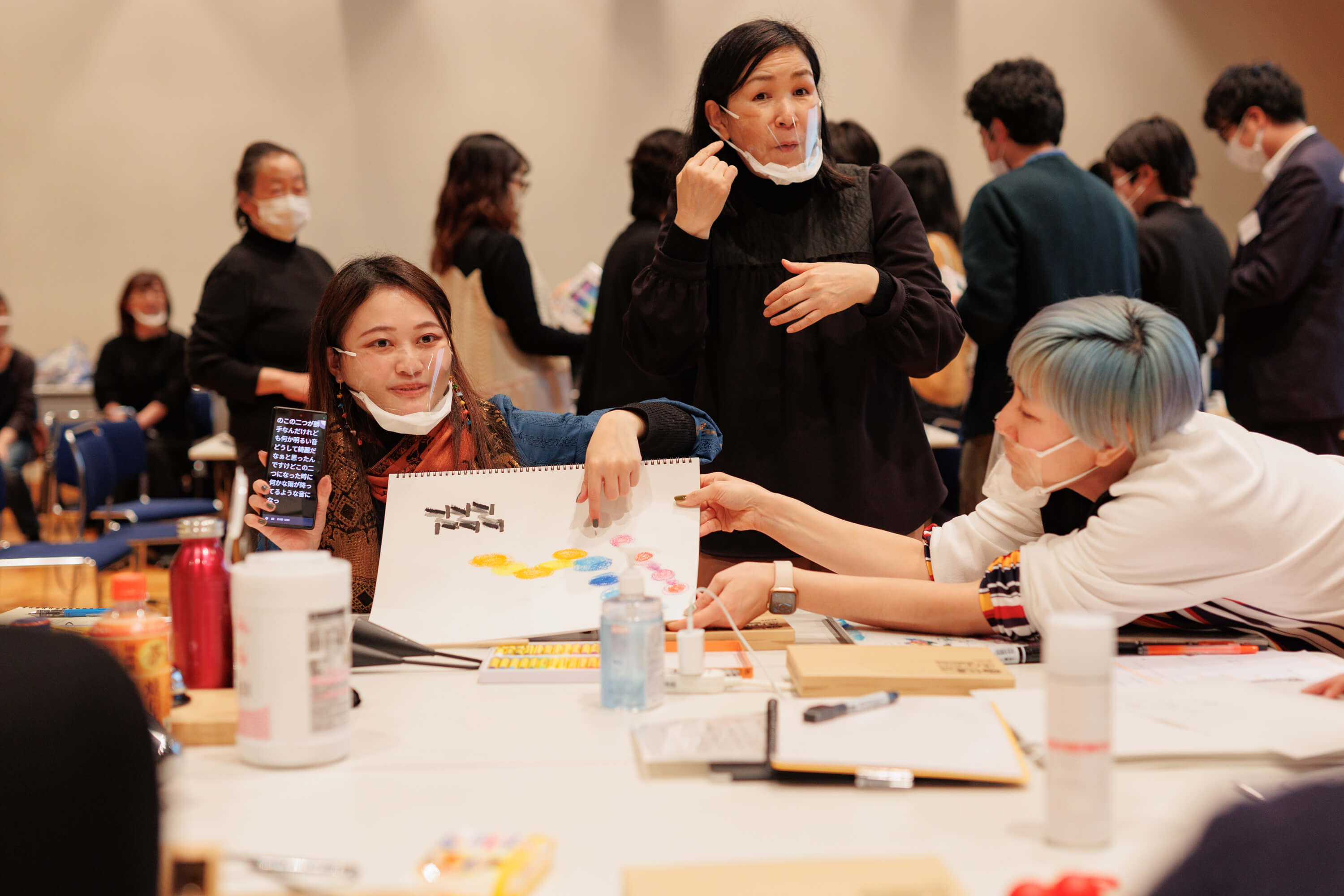
Participants further commented that they were glad to have found friends to talk with about inclusivity, and that they would like to collaborate with people with disabilities in the future to create something that has never been done before. The workshop provided participants with many insights to consider in their future research, jobs, and daily life. Overall, it was a valuable moment for face-to-face communication and break from the COVID-19 pandemic.
Reporting and text: Yuri Shirasaka
Photography (starred [★] photos only): Motoi Sato
Translation: Jena Hayama


